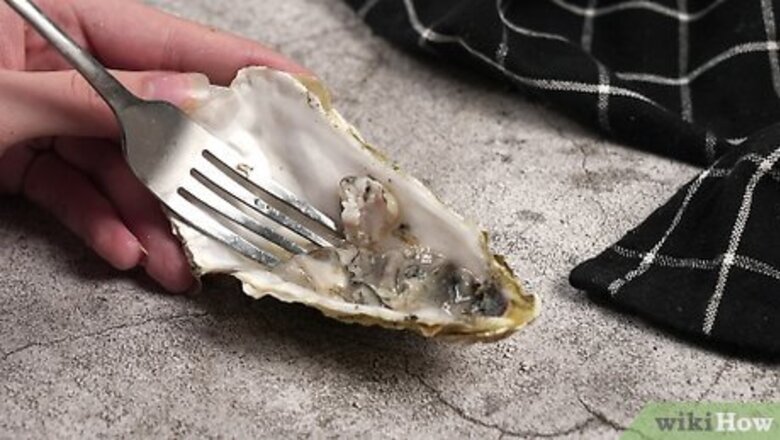
views
Consuming Oysters Properly

Use a fork to detach the oyster flesh from the shell. The oyster will need to be loosely sitting in the shell before you can slurp it and eat it. To detach it, hold the shell with your non-dominant hand and use your other hand to apply gentle pressure to the oyster until it's no longer attached to the shell. Alternatively, if you're embarrassed about slurping the oyster, it's also acceptable to spear it with your fork and eat it that way.

Garnish your oyster with a condiment to add extra flavor. If you don't think you'll like the taste of raw oyster, you can squeeze some lemon juice onto your oyster for flavoring, or spoon a sauce such as shallot vinegar onto it. Of course, if you like salty, buttery tastes, you can also simply eat it as is! Other traditional condiments served with oysters include grated horseradish, cocktail sauce, wasabi, and mignonette.
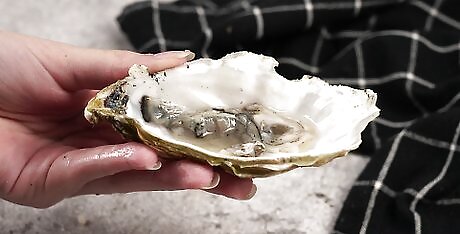
Keep the oyster shell flat when you pick it up to avoid spilling the juices. The liquid in the shell, called the “oyster liquid,” is what gives the oyster much of its flavor. Hold the shell so that the smooth edge is facing towards you to make it easier to eat the oyster.
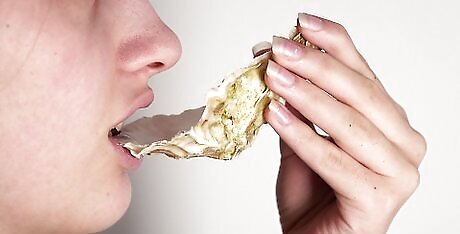
Tip the shell up and let the oyster and its juices slide into your mouth. Some people like to give the oyster a light chew, while others prefer to simply swallow it whole. Both methods are acceptable, although some will argue that chewing the oyster as you eat it allows you to experience more of its flavor. Don't be embarrassed about slurping the oyster; this is also perfectly acceptable! If the oyster doesn't slide into your mouth, this probably means it's still attached to the shell. Set the oyster back down and use a fork to gently detach it before going to slurp it again.
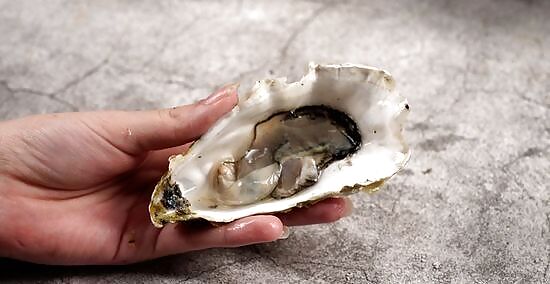
Don't eat the oyster if it smells funky or looks thin. A good oyster should look opaque and meaty, rather than translucent and little. It should also have a salty ocean scent. If it has a strong, fishy odor, it's probably bad. If you suspect your oysters are bad, ask your waiter if they can be replaced. It's not worth it to potentially eat bad oysters. You should discard oysters whose shells have opened because they've died in storage.
Buying Fresh Oysters
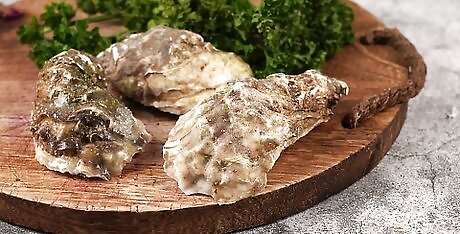
Visit local fish markets to buy the freshest oysters. Oysters that are sold at supermarkets have usually been out of the water for a few weeks, meaning they're not as fresh. A local fishmonger or farmer's market with a high turnover rate will be your best bet for finding the freshest oysters for sale. If you do buy your oysters from a supermarket, ask the person at the fish counter how long ago the oysters were delivered to know how relatively fresh they are. Some fishmongers also offer to deliver oysters directly to your door. Look online to see if there are any providers in your area who offer overnight oyster deliveries.
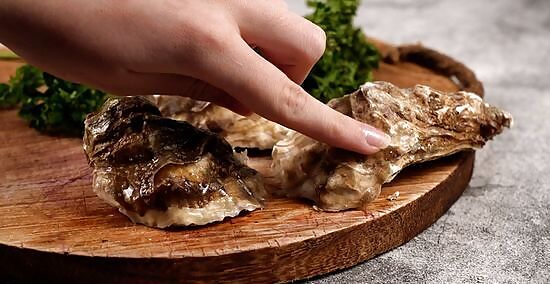
Opt for oysters that aren't open or that close when you tap them. Since dead oysters can harbor dangerous bacteria, you should only buy and eat oysters that are still alive. Live oysters will either have a closed shell or snap their shell shut when you touch them. When live oysters are refrigerated, they may be a bit slow to respond to taps on their shells. Wait a few minutes to see if the shell fully closes before immediately tossing out the oyster.
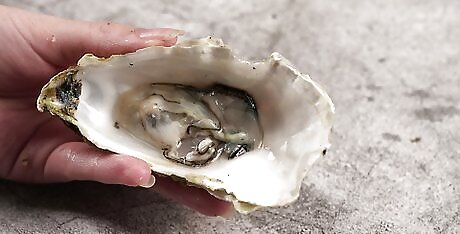
Avoid buying oysters that have a rancid odor. Good oysters should smell like the sea, with a mild, salty scent. Before buying a large number of oysters, have the provider open 1 in front of you and give it a smell test. If it has a strong or unpleasant odor, move on to a different bunch of oysters.
Cleaning and Opening Whole Oysters
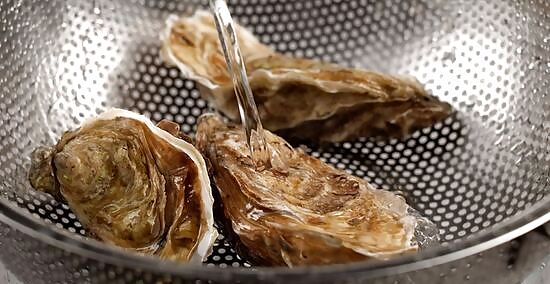
Run the oysters under cold water to wash them. If necessary, use a scrub brush or an old toothbrush to scrub off any mud or debris on the shell. Make sure you've gotten the oysters fully cleaned before opening and eating them. If possible, put the oysters in a colander while you're washing them and put crushed ice on top of them. This will keep the oysters even colder and fresher while you clean them. You can also arrange them in a single layer and hose off that single layer before shucking them.

Insert the tip of the oyster knife into the hinge of the oyster shell. Put on a pair of oyster gloves to protect your hands and hold the oyster shell in your non-dominant hand. Then, use your dominant hand to insert the knife into the small hole where the top and bottom shells come together. Wiggle the knife and push it all the way inside the shell to break the hinge. For maximum safety, use an oyster knife that has a hand guard attached to it. If you don't have an oyster knife, use a short knife with a strong, blunt blade.
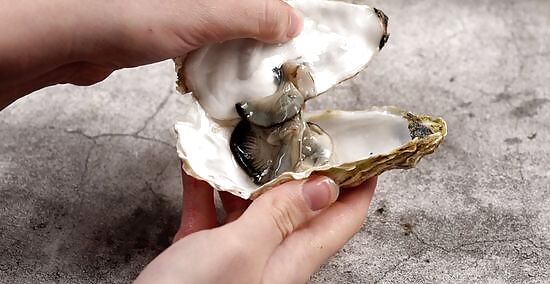
Push the knife into the shell and run it backwards and forwards. Angle the knife upwards as you push it in, then twist it until the shells snap apart. Run the knife back and forth so that you cut the muscle that holds the top and bottom shells together. The shell will be very tightly closed as you do this; use a firm grip when handling the knife to make sure it doesn't slip away from you.
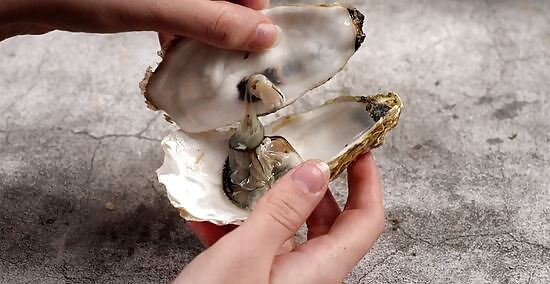
Remove the top shell, then detach the oyster from the bottom shell. Keep the bottom shell flat as you remove the top shell so that you don't spill any of the oyster juices inside. Then, cut the abductor muscle holding the oyster onto the bottom shell so that it is lying loose on the shell, ready for serving. The abductor muscle is the last bit of tissue on the bottom of the oyster still connected to the shell. Slide the knife back and forth underneath the oyster to cut it. Open the oyster over a bowl or sink, just in case you do accidentally spill some of the juices inside the shell.













Comments
0 comment